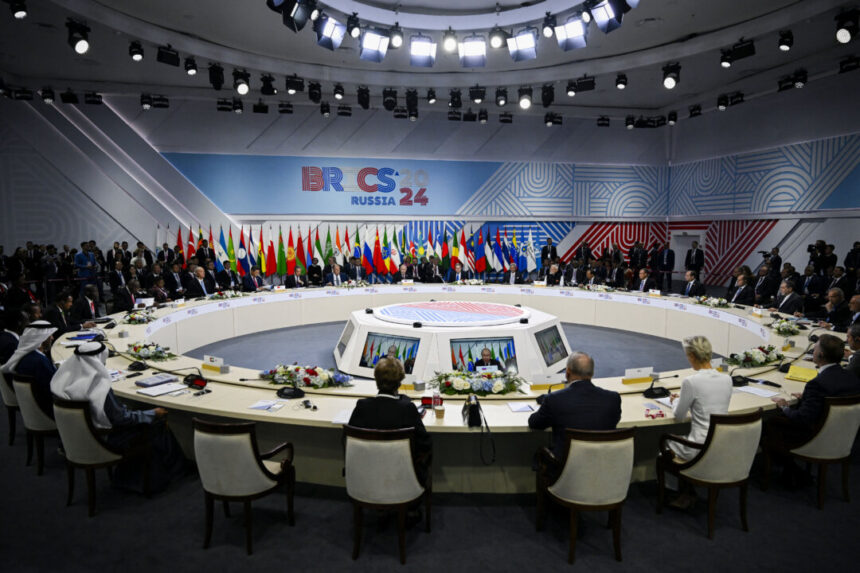Commentary
Interestingly, the document does not mention the word “dollar,” despite the primary objective of the BRICS organization being to establish a currency and trade union to protect against U.S. sanctions and interventions.
The long-term goal of BRICS is to challenge the U.S. dollar’s status as the world reserve currency, aiming for a multipolar world with alternative settlement options. This move is seen as a way to reduce U.S. dominance on the global stage.
BRICS aims to replace the U.S. dollar with alternatives like local currencies, a basket of currencies, cryptocurrency, or even gold. Regardless of the substitute, the main focus is on challenging the dominance of the dollar itself.
Although the shift away from the dollar may not happen immediately, the momentum against U.S. dollar hegemony is growing. The freezing of Russia’s U.S.-dollar assets by the United States following actions in Ukraine accelerated this movement, highlighting the political risks associated with dollar dependence.
The IMF’s recent report indicates a gradual shift away from the dollar by central banks over the past two decades, despite the dollar’s value remaining stable.
The U.S. dollar’s status as the world-reserve currency dates back to the end of World War II, established through the Bretton Woods agreement in 1944. However, concerns about a dominant currency causing economic imbalances and vulnerabilities were present even then.
The Bretton Woods system, although based on a gold exchange standard, faced challenges as the United States engaged in significant spending in the 1960s, leading to gold outflows and eventual breakdown of the system.
In 1971, Richard Nixon made the decision to end the gold standard system by closing the gold window. This move transitioned the United States to a pure paper standard, eliminating protections against inflation in the process.
As a result, the Federal Reserve became the sole entity responsible for monitoring monetary and fiscal policies, leading to a race towards inflation. Less than a decade later, the United States faced severe inflation issues, setting off a series of economic crises. Additionally, the United States was burdened with the responsibility of providing liquidity to the global economy, with trade flow considerations no longer factoring into international exchange equations.
The consequences of the U.S. dollar becoming the reserve asset for central banks worldwide were evident. U.S. industries suffered as other countries industrialized, leading to ongoing inflation and economic downturns. The excessive expansion of paper money domestically further exacerbated the situation, resulting in the devaluation of the dollar by at least 20% and potentially more.
Comparatively, the purchasing power of the dollar has significantly decreased since the establishment of the Federal Reserve in 1913, with its value reduced to 3.1 cents. The erosion of the dollar’s value underscores the impact of monetary policies over the years.
Moving forward, there is a need to reconsider the role of the dollar as the world reserve currency. Prioritizing the dollar as a domestic store of value could benefit American manufacturing and export industries, making them more competitive on the global stage. By focusing on sound money policies domestically, the United States can address inflationary pressures and enhance purchasing power for its citizens.
Ultimately, the United States faces a critical decision between continuing as the global money printer or safeguarding the standard of living for the American middle class. Emphasizing the latter option would be more beneficial in the long run, prioritizing the interests of American citizens over global economic considerations. Please rephrase this sentence.
Source link









